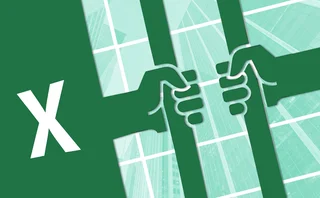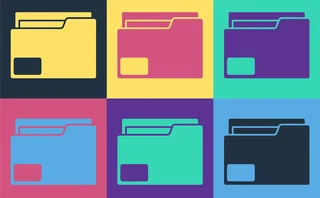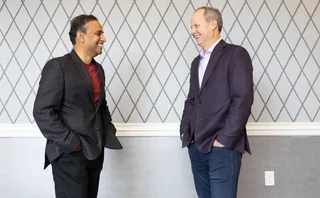Scott Blandford's Random Collisions
TIAA's chief digital officer sits down with Waters to discuss how the retirement giant is using big data to improve the customer experience and what the institutional side of finance can learn from retail.
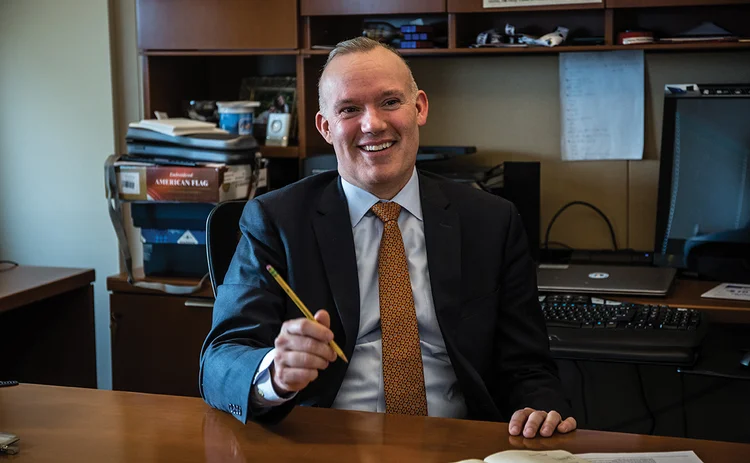
One hundred years ago, with a $1 million endowment, famed philanthropist and business magnate Andrew Carnegie founded the Teachers Insurance and Annuity Association of America, known today as TIAA. It served as the pension scheme for teachers across the country. In 1920, it doled out its first annuity income payment for a whopping $10, which is the equivalent of being paid out $125 today.
In retrospect, it shouldn’t come as much of a surprise that Scott Blandford would end up at TIAA, even though Blandford thought he’d spend his life in Dayton, Ohio, working in some capacity in academia. He was born and raised in Dayton. He went to the University of Dayton, where he earned his undergraduate degree in electrical engineering. He stayed there to get his masters in the subject. And he continued there as he pursued a PhD. He even started his dissertation there and conducted his oral candidacy exam. The path of an academic-lifer seemed set in stone.
“I loved the academic environment and I honestly thought I would spend my life in academia, probably at the University of Dayton,” he recalls.
Much to his father’s chagrin, though, Blandford bailed on becoming Dr. Blandford. While at university, he started working on software projects with some of his professors. He enjoyed the energy of joining forces on a team to solve complex problems; it was exciting to work on these real-world projects and problems. It also didn’t hurt that his wife, Martha, was pregnant with their first child, a girl—and a steady engineer’s paycheck can be more enticing than a grad student’s stipend.
While he never lost his love of academia, he’s still happy with the decision he made to enter the world of engineering. His dad, on the other hand? Not so much. “It’s something that my father never really let me forget. It’s worked out OK, but you know dads,” says Blandford with a chuckle, himself now a father of two daughters—Kate and Audrey.
Even though he’s not a professor on Dayton’s campus today, over two decades later he’s helping professors—and others—across the globe prepare for retirement, by leading TIAA’s digitization efforts.
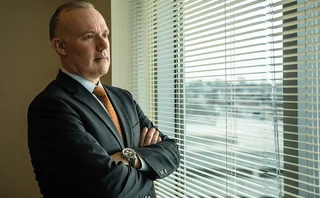
The Innovation Ecosystem
Blandford, 51, now calls Hopewell, New Jersey home and he commutes about 45 minutes to the Jersey town of Iselin, where TIAA has offices. After an 11-year run at Fidelity Investments and about four years at Merrill Lynch (and then Bank of America Merrill Lynch after the merger), he joined TIAA in December 2010 and today serves as its chief digital officer and head of tech and ops for TIAA’s retail operations.
Focusing more on the retail side of the business, he’s not a typical profile candidate for Waters, which leans toward the institutional side of the capital markets. But, increasingly, the worlds of institutional and retail are colliding as the finance sector is becoming automated and digitized, whether you’re a retail or investment bank, a hedge fund or pension fund, or a mortgage or insurance company.
In technology, different backgrounds can lead to innovative solutions. In creative circles, it’s the theory of random collisions of unusual suspects, which—as best as Waters can tell—was coined by author and founder of the Business Innovation Factory, Saul Kaplan. At its core, it states that if you only speak with the same people—speak in silos—then you develop a mind meld that can have immediate gains, but in the long run you develop tunnel vision through eschewing outside influence.
Blandford says that an error many firms make is trying to introduce innovation, rather than getting out of its way, and letting it grow organically.
“It’s very tempting to think that in a large enterprise, siloed functions are the only way,” he says. “The reality is that having siloed functions—whether that’s IT, marketing or communications—is necessary because it gives you functional excellence, great execution, control and quality. But while it’s necessary, it’s not sufficient. To do a great job for customers, you have to deal with what sits between the silos—I call them seams; there’s gold in the seams, just like the coins in the seams of a sofa’s cushions.”
Blandford says you don’t want people in their specific silo to say that the way to get ahead and do well is just to worry about their own problems—you have to have people getting out into the world a little bit. While deductive reasoning has told him that it pays to build an organization where people do exactly what they’re told, he says experience has taught him that while that’s necessary to an extent, you need to simultaneously create an ecosystem where people work on their focus areas and are encouraged to spread out.
It’s that ability to build a team environment that has made Blandford so valuable to the company, says Rahul Merchant, head of client services and technology at TIAA.
“Scott has done a tremendous job driving an aggressive client-focused and innovative digital agenda at TIAA,” Merchant says. “His passion and energy for collaboration and creating change has helped us better interact with customers in the ways that they prefer.”
Beauty in Simplicity
Looking to incorporate some of these beliefs, Blandford has helped to oversee a huge digital transformation effort at TIAA. Sometimes, innovation gets confused with groundbreaking advancements. While things like blockchain and machine-learning algorithms are certainly innovative, sometimes simplicity can be innovative, too.
For example, one area of technology that often gets overlooked or saved until last is the internal user desktop. Bland? Yes. But it is a vital workflow tool that can help improve the customer experience.
About five years ago, Blandford’s team had an idea around remaking the desktop for its employees. A typical corporate desktop is a collection of vendor tools that don’t fit together all that seamlessly, he says, and can be tough for people to navigate. They wanted to create a single unified desktop for the company’s internal teams.
The idea they came up with was to create a giant wiki where everything an internal associate would want to do with a customer could be a topic, taken alone, but connected to everything else.
“We thought, why don’t we take a lesson from Wikipedia? Instead of having tabbed navigation and a single structure where we expect every internal TIAA associate and every customer to think alike, let’s create a desktop built around topics that are massively hyperlinked to each other,” Blandford says. “With Wikipedia, when you look up a famous person, you get a big long scrolling page with everything about the person. It allows them to use the topics that they care about; it’s not just one giant application where everyone gets the same thing. You use the pieces you want and it’s all networked together.”
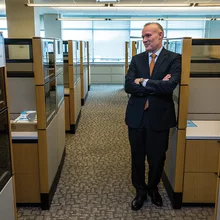
The result was the Unified Desktop, featuring a Wikipedia-like page for every customer, and which has since been expanded to include institutional clients and even employees. Processes that would’ve taken hours of research have been cut down to minutes; answers to questions that would have taken upward of 30 minutes are now answered in seconds. “The reason it’s continued to receive the investment it has is because it really works,” he says.
Stemming from that experience, last year TIAA fully redesigned its homepage with an integrated, personalized and simplified user experience (UX). Through the initiative, TIAA reduced the company’s secure landing page content by about 30 percent to create an easier-to-use interface. “All the content that was there was good content—helpful content—but being respectful of our customers means not overwhelming them,” Blandford says. “We debated this a lot internally, but what we saw was that every time we took something off of the homepage, our top two box scores for our secure landing page would go up.”
This helped result in a year-end client satisfaction score of 88.5 percent, three percentage points higher than in 2016, and a new record for the company. Through it, TIAA served 55.8 million digital client sessions across all channels, added 188,000 full eDelivery subscribers, and deployed 10 mobile releases, with features including tax statements, fund transfer capabilities, bill payments, mobile deposits, facial recognition and real-time brokerage trading. TIAA Digital also built a system called Next Best Action (NBA), which uses insights from customer data to recommend products or account improvements that might benefit the user the most. With this technology, consultants can initiate personalized conversations, resulting in better outcomes for the firm’s clients.
When a customer calls TIAA’s National Contact Center (NCC), the NBA tool displays a recommendation—such as ways to improve account information or products to offer—on the Unified Desktop screen. The company says that NBA has generated more than $100 million in sales and has helped rectify incorrect customer information for more than 100,000 individual users.
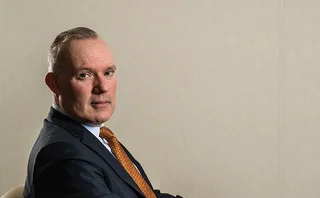
The Power of THOR
An integral part of TIAA’s digitization strategy is a big-data analytics platform dubbed THOR, short for TIAA Hyper-data Online Repository. It allows the company to look at its entire online footprint, dividing the retirement giant into something like a massive supermarket, complete with departments—such as IRAs, mutual funds, and brokerage services—and individual aisles—bill payments, remote deposit capture, sales, etc. Data is consumed in real time as customers make their way through the website. That data is then stitched together with their profile so that a TIAA associate can see everything the customer is doing—which department they’re in, which aisle, what things they are clicking on—and they can see where customers drop off.
“If a customer is trying to get help with something and it’s a three-step process, we’re monitoring in real time what percentage of people are getting through the whole three-step process,” Blandford says. “Sometimes people change their mind—so we’re not expecting 100 percent—but a lot of the time they get confused because we’re using too much financial services jargon or they want to talk to somebody because they’re not quite confident what will happen if they hit the next button. THOR provides real-time and trended insights about how customers are actually being successful or not with us, and we get that information in real time to the people who can make changes.”
The analytics and visualization platform allows the firm to make small, targeted enhancements to improve the customer experience, rather than relying on an IT rollout every six months, or so. “It’s like rearranging the shelves at a real store to help people find what they’re looking for,” Blandford explains.
The first implementation of THOR was in 2011, but it was small and focused on just the tech pieces of the company. Built internally in conjunction with an undisclosed third-party partner for data collection, the first patents were granted for THOR in 2016, and “there are a couple more that are still in flight,” Blandford says.
“We couldn’t find an end-to-end solution that could grab and process the data at the pace we needed, with the massive, massive amount of data that’s coming in,” he continues. “Also, in the world of big data, the story gets lost because there’s so much data now. So, yeah, we’ve got 200 million data points flying by in an hour, but the person who’s worried about the bill-pay aisle in my store, they don’t care about 200 million data points per hour—they want to know how their bill-pay customers are doing. Are they happy? Are they getting the results they want? So what THOR does is it gets both ends of it—it grabs the data, processes it, stitches it together, and provides real insights to the people who are supporting our clients.”
Beautiful Music
Blandford gives off an aura of positivity. He recognizes that it’s important to create an ecosystem not just at work, but also at home and in private, to learn and to grow. He is a family man who believes that when his wife and daughters are happy, he’s going to bring more energy into the office. He is an avid reader who believes that too often, people stop learning about new worlds because they become too tied to their own jobs and lives. He believes in exposing himself to all types of topics, whether it’s the arts or biochemistry or history.
He’s also a musician, with a passion for jazz guitar. Even to this day, he plays guitar at his church in Hopewell, St. Alphonsus. He believes there is a connection between music and programming. IT is complicated, federated, distributed, and problems are solved as a team. In music, you listen, adjust and pull strengths together to make an enjoyable experience for the listener.
“When I think about what music has done for me, I can be in any kind of meeting and I really take seriously the lessons I learned from playing jazz—listen to what others are doing, try to understand the direction they’re going, and try to be additive,” Blandford says. “Sometimes being additive when you’re playing music is dropping out for a couple of measures because it’s time for someone else to shine through and that’s cool. When you’re performing with a group, what really matters is how it all shows up to the audience, and not how much solo time you get.”
For Blandford, innovation isn’t the destination, nor is it something that can be forced—it’s an ecosystem, a band, an environment of random collisions.
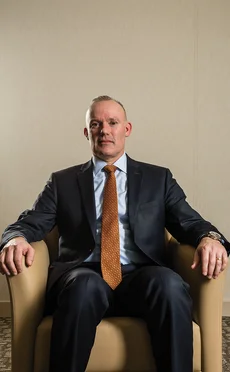
Further reading
Only users who have a paid subscription or are part of a corporate subscription are able to print or copy content.
To access these options, along with all other subscription benefits, please contact info@waterstechnology.com or view our subscription options here: http://subscriptions.waterstechnology.com/subscribe
You are currently unable to print this content. Please contact info@waterstechnology.com to find out more.
You are currently unable to copy this content. Please contact info@waterstechnology.com to find out more.
Copyright Infopro Digital Limited. All rights reserved.
You may share this content using our article tools. Printing this content is for the sole use of the Authorised User (named subscriber), as outlined in our terms and conditions - https://www.infopro-insight.com/terms-conditions/insight-subscriptions/
If you would like to purchase additional rights please email info@waterstechnology.com
Copyright Infopro Digital Limited. All rights reserved.
You may share this content using our article tools. Copying this content is for the sole use of the Authorised User (named subscriber), as outlined in our terms and conditions - https://www.infopro-insight.com/terms-conditions/insight-subscriptions/
If you would like to purchase additional rights please email info@waterstechnology.com
More on Data Management
Waters Wavelength Podcast: S&P’s CTO on AI, data, and the future of datacenters
Frank Tarsillo, CTO at S&P Global Market Intelligence, joins the podcast to discuss the firm’s approach to AI, the importance of data, and what might be in store for datacenters in the coming years.
Breaking out of the cells: banks’ long goodbye to spreadsheets
Dealers are cutting back on their use of Excel amid tighter regulation and risk concerns.
BMO’s cloud migration strategy eases AI adoption
The Canadian bank is embracing a more digital future as its cloud strategy makes gains and it looks to both traditional machine learning and generative AI for further augmentation.
Waters Wrap: GenAI and rising tides
As banks, asset managers, and vendors ratchet up generative AI experiments and rollouts, Anthony explains why collaboration between business and tech teams is crucial.
People Moves: NorQuant, Tradition, Duco, HKEx, SimCorp, Hazeltree, Xceptor, Broadridge, and more
A look at the past month’s people moves in the capital markets technology and data space.
Northern Trust building internal cloud data ‘marketplace’
Using a mix of in-house expertise and third-party technologies, the firm has constructed a cloud-based data mesh that gives internal staff access to proprietary datasets and analytical tools to deliver greater insights into client activity.
FactSet looks to build on portfolio commentary with AI
Its new solution will allow users to write attribution summaries more quickly and adds to its goal of further accelerating discoverability, automation, and innovation.
How Ally found the key to GenAI at the bottom of a teacup
Risk-and-tech chemistry—plus Microsoft’s flexibility—has seen the US lender leap from experiments to execution.
Most read
- Chris Edmonds takes the reins at ICE Fixed Income and Data Services
- Waters Wavelength Podcast: S&P’s CTO on AI, data, and the future of datacenters
- Waters Wrap: GenAI and rising tides


